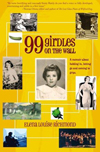Aching with Brahms
One of my students (Jackson) recently inspired me to learn Brahms’ Intermezzo Opus 118 No. 2 in A. It’s one of the most difficult pieces I have worked on in some time. In recent years, I have done more sight reading than I have dug into juicy classical pieces.
Another of my students (Jenni) singlehandedly improved my sight reading skills by about 300% simply because she came in week after week with new Broadway music she had already learned; she didn’t need me to go over and over the vocal line with her, a process which allows me to pick up the accompaniment more or less at my leisure. She had already saddled up and was ready to ride. I read through piles of music with her and got to where I was no longer intimidated by any musical comedy composer except Stephen Sondheim.
This Brahms Intermezzo was compelling. It has achingly beautiful melodic lines. I got lost in them, happily playing the first two pages slowly over and over for weeks before I moved on to the middle section which featured one of those patches that snorts at whatever technique one brings to the music: in this case, massive chords that change with every beat and handfuls of accidental sharps including the annoying ones that fall on white keys.
In playing the piano, there is a compulsion to keep looking at the fingers as though we aren’t sure they are in the same place they were one beat ago. Sometimes they’re not: after all there are 88 keys and we have only ten fingers and they do have a way of migrating. With some students, the hands spasm, as though the brain tells them a move is imminent, updated information to follow. Some students hover over the keys, staying in perpetual motion so they are ready to move to wherever they eventually want to be.
In the Brahms, it was hard to move from chord to chord without looking at my fingers to remind myself where they were even though I knew they hadn’t moved anywhere in the last half a second. It was humbling to watch me fumble through those eight measures because it reminded me of my students whose tiny pieces are a full eight measures long but who do the same thing. This is how it feels, Teacher.
One of the reasons the piano is such a good first instrument is because the keys stay where they are. If the notes sound out of tune, it’s not your problem; it’s your piano tuner’s problem. Neither the piano keys nor my fingers had gone anywhere when I was working on the Brahms but for a while, my mind couldn’t rest in that. It was disorienting to feel over and over and over that I didn’t know where I was. I worked at moving one finger at a time without looking at my hands; gradually my mind was able to let my fingers think as I moved through the chords and I was free to listen to what Brahms was up to.
My experience in psychoanalysis and in meditation has taught me to slow down and to pay attention to every moment; to let the moments unfold, one finger at a time. I am not suggesting that I do this all the time even though it’s always an option. Occasionally something compels me to this state. The glory of a complex piece like the Brahms where the melodies ache and the harmonies heave with passion is that if you pay attention, it’s a pleasure to play slowly and laboriously as much as to master it entirely. One can get happily lost in it, one note at a time.
 RSS Feed
RSS Feed
